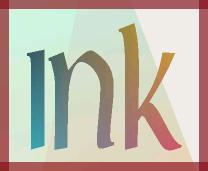|
July 2001
There are new versions of GhostView (Version 4) & GhostScript (Version 7) available. Why is this important? Simple; since Adobe has abandoned OS/2 users, and their old version 3 software cannot read many of the newer Acrobat 4/5 files. So, the only game in town for OS/2 users are the wonderful ports of GhostScript, and its GUI front end, GhostView. You can get the latest versions a couple of ways. First, if you have the June SCOUG CD, the files are there all set to install from the CD. Or, you can go the main website at http://www.cs.wisc.edu/~ghost/ and follow the links. Either way, the new version has a much improved installer that makes using the program painless. If you have the SCOUG CD, just go to x:\install\ghostview, and type "os2setup". That's it! If you download the files, there are two:
Just put them both in a directory, and unzip the installer (for command line junkies, use pkzip /extract /directories gsv400os2). Then type in "os2setup". That's about all there is to the installation. You will be prompted for a directory to install to (default is c:\gs) and then the installer will do its magic. Now there is one caveat -- you need to already have the EMX runtime on your system, or failing that, have the file emxrt.zip in the same directory that you use for the install. The GSView installer will even prompt you for the EMX file (it's avaliable on Hobbes & check Gary Wong's Download! column for other URL's). I discovered this the hard way when using the SCOUG CD on a 'virgin' system without any EMX based programs like SANE or CDRecord (or previous versions of GhostView). The other thing to take seriously is the note when installing that you should uninstall any previous versions of GhostView / GhostScript. On my default machine I forgot to do this, and then for some reason my printer didn't want to work with GhostScript. When you have finished the install, you wind up with that cute little Ghost icon with the glasses, and you have a program that will let you play with PDF and .ps (post script) files on screen. You can also set up Netscape to use GSView as your PDF viewer for Internet access. To test how well this new version works, I used Acrobat Distiller on that 'other' operating system to make some .ps and PDF files using MS Word documents. The first document converted was a 7 page set of minutes of the LA County Civil Service Commission. The original file was a 45K Word file, with a resultant .ps file of 278K. Also I converted a Superior Court case of 12pp in Word format, original file size about 41K, and a resultant postscript file of 433K. Both displayed and printed flawlessly. Next I took two campaign documents from Senator McCain's unsuccessful bid for president. The first was a simple 1 page file with a color graphic image. Here the original file was 45K, and the .ps file was 264K. Again, no problem in viewing and printing. Growing bold, I then downloaded an IBM 4 page sales brochure delineating value packages for software developers. The PDF file was 171K, and was originally created using QuarkXPress/MAC, and converted to PDF using Acrobat Distiller 4.05 (MAC) with an 8.26"x11.68" page size. Again it displayed just fine, but didn't want to print. Next, I took a more complex political flyer for McCain, with color and one of those 'I Want You' Uncle Sam pictures in it. The .ps file displayed and printed out simply great. Finally, I took a large complex PDF file -- this one over 1Mb of graphics & text, a poster showing who owns what media companies. The original file is of a 14.5"x 20.83" poster. Again the image displayed perfectly. What can I say? The latest GhostView/GhostScript combo is really impressive, and seems to have added features and fixed most of the Acrobat/PDF Version 4 bugs that were present in the older version. Since I want to keep this kind of critical OS/2 development alive,I have registered (as in, paid actual $$) to Russell Lang of GhostGum software. You should too! Reach me at Tony@scoug.com.
By day, Tony Butka is a bureaucrat for Los Angeles County. In his other life he lives in a loft surrounded by computers, printers, and a host of vinyl records.
P.O. Box 26904 Santa Ana, CA 92799-6904, USA Copyright 2001 the Southern California OS/2 User Group. ALL RIGHTS RESERVED. SCOUG, Warp Expo West, and Warpfest are trademarks of the Southern California OS/2 User Group. OS/2, Workplace Shell, and IBM are registered trademarks of International Business Machines Corporation. All other trademarks remain the property of their respective owners. |









